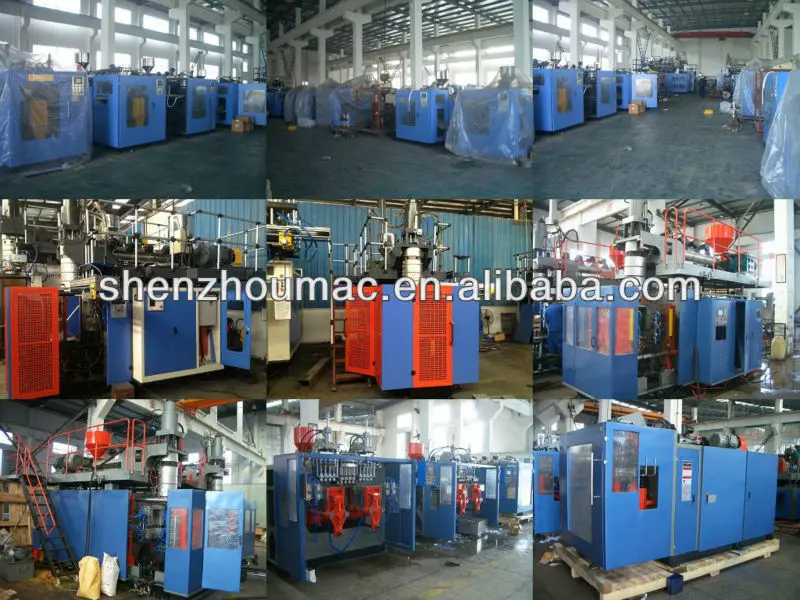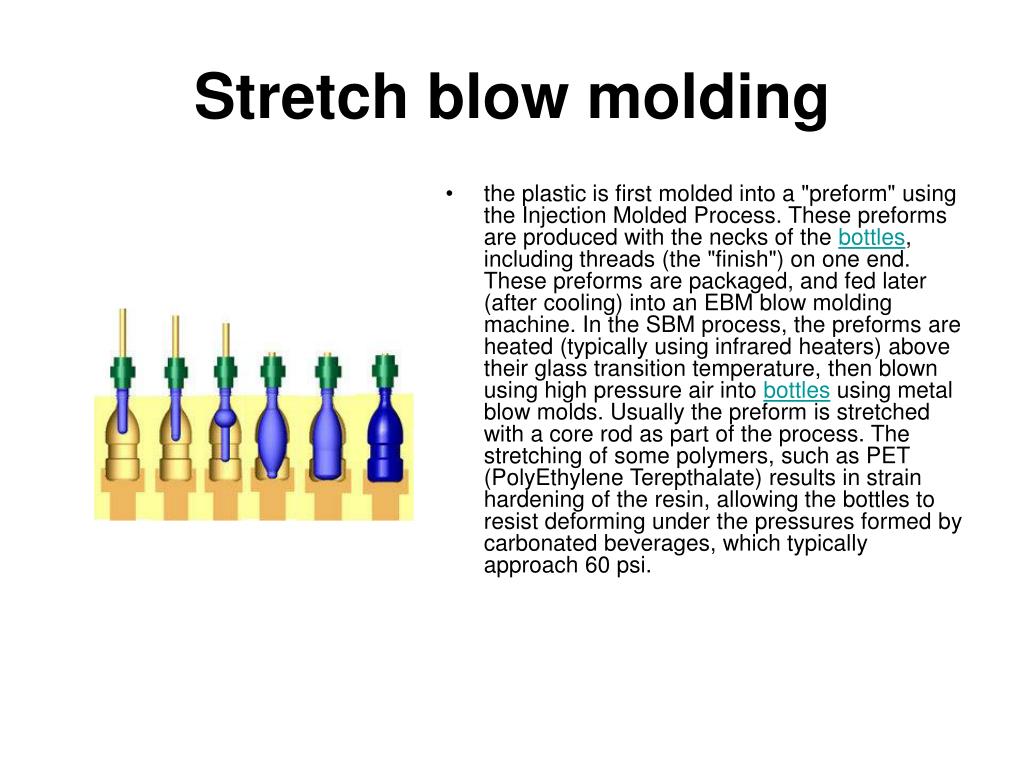

Otherwise, even small differences in temperature or preform wall thickness will invariably move the gate off-center. High pressure may not be energized before the stretch rod has firmly pressed the preform against the blow mold bottom. In two-stage (reheat) stretch-blow molding this is most often controlled by position rather than time, and often delaying the onset of pressure keeps the gate in the center. The same is true for when to engage the preblow. Therefore, operators may have to experiment with different pressures to test their effect. The amount of preblow pressure required depends on the preform thickness and temperature. When it is connected, the preblow cannot be so high as to blow the preform off the rod. The stretch rod has to connect with the preform before preblow pressure has a chance to blow the preform off-center. Preblow pressure is too high and/or too early.As preforms have become thinner, these gaps have to become smaller. This will ensure that the preform cannot slip during high-pressure blow. less than the preform gate wall thickness. Typically, the distance between stretch rod and blow mold bottom should be adjusted to 0.040 in. Stretch rod does not pin the preform down enough.

Here are the most common causes for this defect: Otherwise, wall thickness will go where the gate goes and no amount of self-leveling can prevent this from happening. The vestige of the injection molding process must be centered to the blow mold and held there firmly when high-pressure air inflates the pre-inflated preform bubble into a bottle. This is by far the most common cause of wall-thickness problems. Following are the various issues that can skew wall thickness, in order of relevance: As with all plastic processes, there are a number of conditions that must be maintained in order to achieve the described result. However, many bottles show much greater differences than that. difference in wall thickness around the circumference of a round bottle. This forces adjacent parts that were maybe a little cooler to stretch, and in this back-and-forth of stretching and pausing, the preform develops into a bottle that may show as little as 0.001 in. This means that as one part of a preform starts to stretch first, the very act of stretching induces strain-hardening, making it tougher to stretch as a result. Among the beneficial properties of PET is its self-leveling ability.


 0 kommentar(er)
0 kommentar(er)
